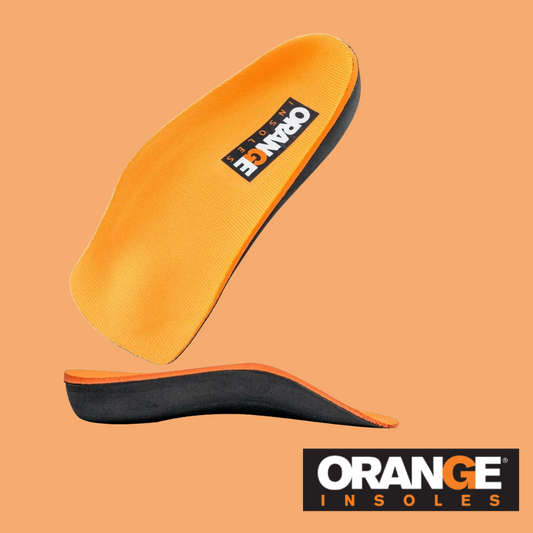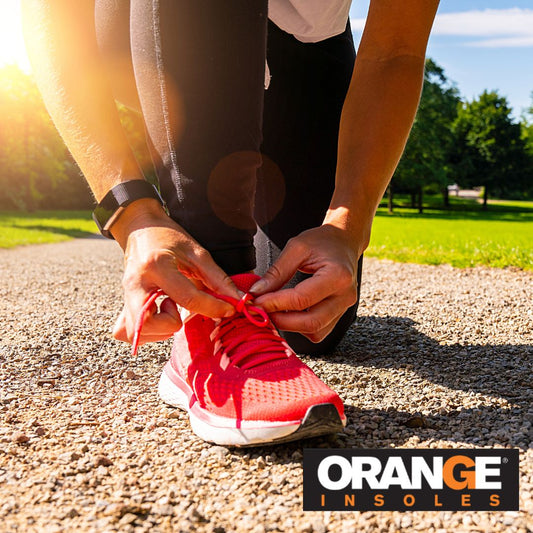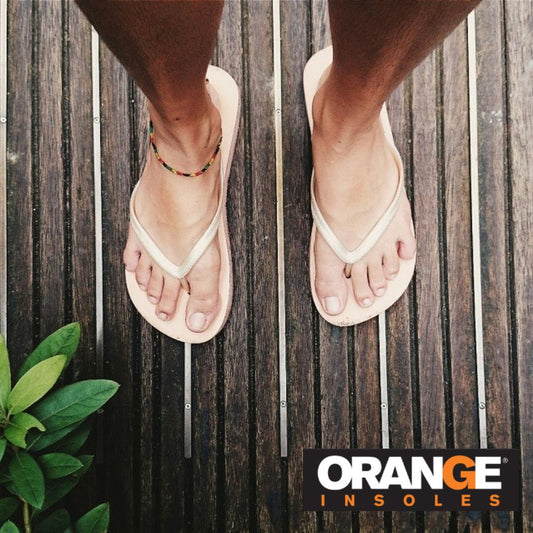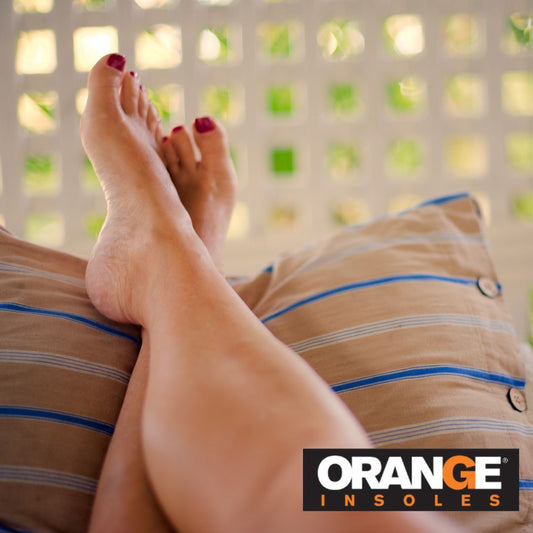Gel Insoles Vs. Orange Insoles
With so many gel insoles on the market boasting about walking on a cloud and how comfy your feet will be in them, you might be wondering; why should I go with Orange Insoles?
Material can make a huge difference in the effectiveness of an insole and it might seem like a no-brainer to go with the insoles that lean hard on comfort, especially if you’re on your feet all day. But don’t be fooled by the squishy softness of those gel insoles. They might be comfy short term, but will they have the support you need long term?
Orange Insoles are made with memory foam and are designed with comfort AND support in mind. But we agree that it can seem strange to go for foam over a gel so let’s take a look at some of the questions we get the most and why the answer might just point to Orange.
How long do gel insoles last? How long do Orange Insoles last?
This is a great question everyone needs to ask to figure out if a certain pair of insoles are worth it. Gel insoles should last you about 6 to 12 months, depending on how much you use them. Signs that they’re too worn out are cracking and discoloration. Orange Insoles should last about the same amount of time- also depending on usage.
Buuut, unlike gel insoles, the Orange ¾ and the Orange Full designs have hard plastic shells to combat overpronation that can lead to injuries and long-term pain. So even when your Orange insoles may be breaking in, or the foam is a bit compressed, the arch support remains in place. It is recommended that you replace your insoles as soon as these signs pop up but if you don’t get to it right away, you can walk easy knowing you’re still supported due to the hard plastic insert layer.
Do gel insoles really help?
There are definitely some benefits to gel insoles; they act as a shock-absorbing barrier in your shoe (especially great for runners) and can help evenly distribute your weight as you run. The problem occurs when someone’s foot is already misaligned: gel insoles can’t redistribute your weight in a way that will make any significant difference.
So, in a perfect world filled with perfect feet, gels aren’t too bad! But the reality is that most insoles need extra features to help fix the root causes of pain (usually, misalignment!).
How do Orange Insoles help prevent injury?
Although the massaging effect of gel insoles is tempting, Orange Insoles are equipped with metatarsal pads to prevent calluses and stress around the balls of your feet, and deep heel cups for the prevention of conditions like plantar fasciitis.
Our arch supports are valuable for flat feet and high arches alike and help distribute weight properly. By using insoles with no arch support (or no support at all), you might experience hip pain, lower back pain, shin splints, and more - all caused by overpronation which can lead to a myriad of other injuries.
Can Insoles help with sweaty feet?
Many gel insoles aren’t that great at moisture-wicking, which isn’t great news if you have sweaty feet or are very active. Though some are perforated with “sweat vents,” or have a special construction to prevent excess sweating, many do not have a protective layer against sweat.
All Orange Insoles are lined with microfiber that is tightly woven to reduce moisture build-up and keep the insole in good shape (and your shoes from getting sweaty and stinky!).
How do I wash gel insoles? How do I wash Orange Insoles?
Both gel insoles and memory foam insoles should be cleaned regularly but in different ways! For gels, you need to submerge them in equal parts water and white distilled vinegar and leave them for about 3 hours (to kill off all the bacteria). After that, you can rinse them off and let them air-dry.
For memory foams like Orange Insoles, you should avoid submerging them in water. Just a gentle brush, like a toothbrush, can wipe away chunks of dirt and grim. Then, mix water with a bit of mild dish detergent and gently scrub around the insoles. Wipe them down with a wet cloth and they’re good to be air-dried.
The important thing to remember is don’t put either one of these in a machine dryer or in the sun! The material, whether foam or gel, can be warped or cracked by both.

























































